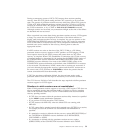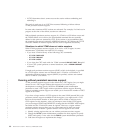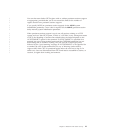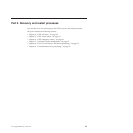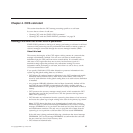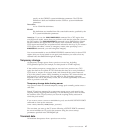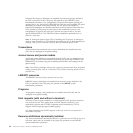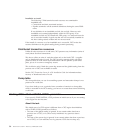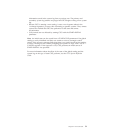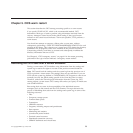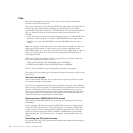specify on the GRPLIST system initialization parameter. The CSD file
definition is built and installed from the CSDxxxx system initialization
parameters.
Data tables
As for VSAM file definitions.
BDAM
File definitions are installed from file control table entries, specified by the
FCT system initialization parameter.
Attention: If you use the SHCDS REMOVESUBSYS command for a CICS region that
uses RLS access mode, ensure that you perform a cold start the next time you start
the CICS region. The SHCDS REMOVESUBSYS command causes SMSVSAM to release
all locks held for the region that is the subject of the command, allowing other
CICS regions and batch jobs to update records released in this way. If you restart a
CICS region with either a warm or emergency restart, after specifying it on a
REMOVESUBSYS command, you risk losing data integrity.
You are recommended to use the REMOVESUBSYS command only for those CICS
regions that you do not intend to run again, and therefore you need to free any
retained locks that SMSVSAM might be holding.
Temporary storage
All temporary storage queues from a previous run are lost, including
CICS-generated queues (for example, for data passed on START requests).
If the auxiliary temporary storage data set was used on a previous run, CICS
opens the data set for update. If CICS finds that the data set is newly initialized,
CICS closes it, reopens it in output mode, and formats all the control intervals
(CIs) in the primary extent. When formatting is complete, CICS closes the data set
and reopens it in update mode. The time taken for this formatting operation
depends on the size of the primary extent, but it can add significantly to the time
taken to perform a cold start.
Temporary storage data sharing server
Any queues written to a shared temporary storage pool normally persist across a
cold start.
Shared TS pools are managed by a temporary storage server, and stored in the
coupling facility. Stopping and restarting a TS data sharing server does not affect
the contents of the TS pool, unless you clear the coupling facility structure in
which the pool resides.
If you want to cause a server to reinitialize its pool, use the MVS SETXCF FORCE
command to clean up the structure:
SETXCF FORCE,STRUCTURE,STRNAME(DFHXQLS_poolname)
The next time you start up the TS server following a SETXCF FORCE command,
the server initializes its TS pool in the structure using the server startup
parameters specified in the DFHXQMN job.
Transient data
All transient data queues from a previous run are lost.
Chapter 4. CICS cold start 47



